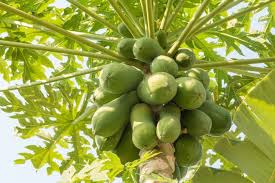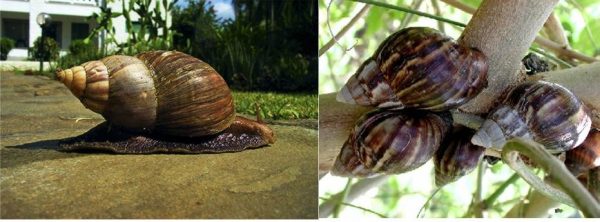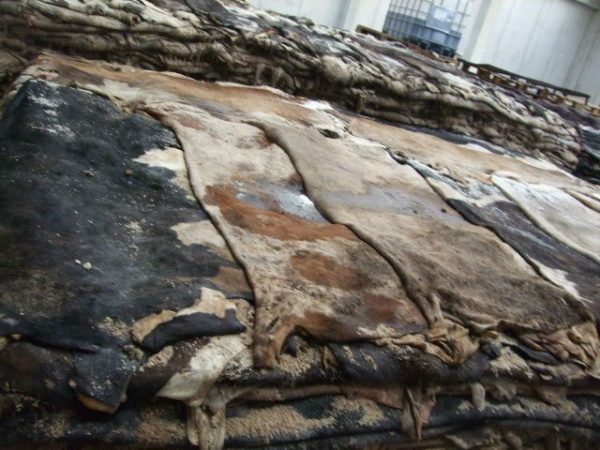How To Start Pawpaw Export Business
 Papaya consumption in Europe is not yet as common as in most tropical countries, but it is gradually increasing. Developments in better logistics, convenience such as ready-to-eat, and increased product promotion contribute to its growth and make papaya an interesting supplement to more well-known tropical fruit. As an exporter, you will have to deal with strong competition from Brazil and excel in quality and product handling to export to Europe successfully
Papaya consumption in Europe is not yet as common as in most tropical countries, but it is gradually increasing. Developments in better logistics, convenience such as ready-to-eat, and increased product promotion contribute to its growth and make papaya an interesting supplement to more well-known tropical fruit. As an exporter, you will have to deal with strong competition from Brazil and excel in quality and product handling to export to Europe successfullyProduct definition
Papaya (Carica papaya) is the oval or pear-shaped fruit of a large tree-like plant. The plant is sensitive to frost, and it can be grown only in tropical regions. Two kinds of papaya are commonly grown. One has sweet, orange flesh, and the other yellow flesh. Either kind is called a green papaya when picked green.
The leading varieties of fresh papayas available on the European market are the Solo, Solo Sunrise, Golden and Formosa. Papayas are most frequently consumed fresh in slices or chunks, as well as in fruit compotes.
Product specification
Papayas are divided into three classes: Extra Class, Class I and Class II. For the different classes of papayas, you can follow the standard in the Codex Alimentarius, the ‘food code’ of the World Health Organization (WHO) and the Food and Agriculture Organization (FAO) of the United Nations.
When exporting papayas, they should at least be: whole and sound; clean, practically free of any visible foreign matter; practically free of damage caused by pests; practically free of pests affecting the general appearance of the produce; free of abnormal external moisture, excluding condensation following removal from cold storage; free of any foreign smell and/or taste; firm and fresh in appearance; free of damage caused by low and/or high temperatures; have a peduncle, if present, not exceeding 1 cm in length.
Papayas are known to be difficult to handle, due to their relatively short shelf life and delicateness. The fruit bruises easily, and its storage temperature should be maintained at 10 degrees Celsius to prevent over-ripening due to heat and decay due to cold temperatures.
The development and condition should be such that the papayas: are able to withstand transport and handling; arrive in satisfactory condition at their destination.
Size and packaging
Papayas are classified according to Size Codes A–J, ranging in average weight from 200–300 grams (Size A) to over 2000 grams (Size J). Packaging requirements differ by customer and market segment. They must at least be packed in such a way as to ensure proper protection for the produce. The packaging should be new, clean and of sufficient quality to prevent damage to the product. Discuss preferred packaging requirements with your customers.
Common packaging characteristics: Wholesale packaging in cardboard boxes, which can vary in size. Papayas are ideally packed in single layers, with a protective lining to prevent bruising and damage.
Labelling
Consumer package labelling must be in accordance with the rules and regulations that apply in the European market. Labels may not contain any toxic ink or glue.
If the nature of the produce is not visible from the outside, the package must be labelled with the name of the product, and the name and any optional name of the variety and/or commercial name.
Labels or marking for (pre-packed) fresh fruits should provide the following information: Packer and/or dispatcher/shipper, i.e. name and physical address for example, street/city/region/postal code/country or a code mark officially recognised by the national authority; Product name ‘Papayas’ if the contents are not visible from the outside and name of the variety; Country of origin and, optionally, district/region/place; Commercial specifications. i.e. class, size (code), number of units and net weight; Official control mark (optional)
In addition, the label should include any certification logo (if applicable) and/or retailer logo (in the case of private-label products).
European markets opportunities for papaya exporters
After several years of a steady import volume of around 30 thousand tonnes, European imports have increased from 2013 onwards to around 40 thousand tonnes in 2015 and 2016. This indicates that more consumers are becoming familiar with papayas. Practically all papaya imports into Europe originate in developing countries. The above developments increase your opportunities for export to the European market.
Germany is an important destination for fresh papayas
Germany and the Netherlands are leading importers of fresh papayas, and also show the highest import growth. A large share of German import takes place through the Netherlands, which explains the high import figures for both countries. This means that the Netherlands is a trade hub for papayas, while Germany as well as the United Kingdom, Spain and Portugal are the main destination countries.
Volumes in the eastern part of Europe are low, but countries such as Bulgaria, Poland, the Czech Republic and Slovakia have quickly increased their imports to several hundred tonnes per year. These volumes are comparable with those of the Scandinavian countries. As an exporter, you can either find import partners in the Netherlands, or focus on direct trade routes to relevant destination countries.
The Netherlands is an important market for re-exports
The export of papayas within Europe is limited. The Netherlands is the only country that plays a significant role as a trade hub. Over 75% of the papayas that enter the Netherlands are re-exported, mainly to Germany. The rest of the Dutch export is spread over the rest of Europe.
Find a Dutch importer to supply the European market as a whole. The Netherlands is an important trade hub for papaya imports in the European market.
European papaya consumption has room for growth
Although the import of papayas in Europe is increasing, it is still very low in relation to global production. With regard to consumption, Europe lags far behind producing countries and consumes much less than, for example, the United States. In theory, there is ample room for growth which you can support with promotional activities.
Convenience fruits are popular
Although papayas are not easy to handle, they fit well within the development of convenience fruit. Papayas are available in various sizes, including small individual sizes (baby papayas) and freshly cut fruit in consumer packages is also on offer. Ready-to-eat papayas are still a niche product, but are expected to become more prominent. In 2015, a newly cultivated seedless papaya won the innovation award at the Fruit Logistica trade fair, with the idea of making it even easier to consume. All these developments will help to position your papayas in Europe.
Flavour and size are important
Flavour is becoming increasingly important for European consumers, who prefer papayas to be ripe when purchased, so the fruit can be eaten quickly after purchase. The flavour should be sweet, and the texture of the fruit firm.
The main varieties on the European market are Solo Sunrise and Golden for small fruits up to 700 grams, and Formosa for large fruits above 1 kg. Consumers tend to prefer smaller papayas, particularly in north-western Europe, because they suit individual consumption better. The Formosa variety is often sold as well, due to its longer shelf life and good flavour, and is therefore also increasingly used by processors.
Tips:
Ensure that supply chain logistics and transportation do not affect the flavour of the product in any significant way.
Find the right partner for your specific variety. For smaller varieties, importers with retail contracts provide opportunities. For larger varieties, look for importers that have a good network in food service or processing.
Growing interest in sustainable fruit
In Europe, trends are developing towards more sustainable approaches to production and processing regarding fresh fruit. Environmental and social issues are becoming increasingly important. Social and environmental certification schemes include actions aimed at sharply reducing and registering the use of pesticides, ensuring employee safety and/or even including price guarantees for producers.
Certification schemes that are in line with the Global Social Compliance Programme (GSCP) are more likely to be accepted by European supermarkets.
Tip:
Attention to health food
Consumers in Europe are becoming more aware of health-related issues, and are paying greater attention to their diet. Papayas are known to be very nutritious and to help digestion. Highlighting these health benefits in the promotion of papayas could help increase the papaya consumption in Europe.
Organic niche
The increased attention to health and the environment is also generating interest in organically produced fruits and vegetables. The demand for organic papayas is still very small, given their status as a typical exotic and ‘small-scale’ fruit in Europe. Nevertheless, the current supply of organic papayas is likely to be insufficient, even for the small-scale demand. As volumes increase, the organic trade can be expected to become much more significant.
Reduce the amount of pesticides by applying integrated pest management (IPM) in production. IPM is an agricultural pest control strategy that includes growing practices and chemical management.
Comply with phytosanitary requirements
Fruit and vegetables exported to the European Union must comply with European Union legislation on plant health. The European Commission has laid down phytosanitary requirements to prevent the introduction and spread of organisms harmful to plants and plant products in Europe. These requirements are managed by the competent food safety authorities in the importing and exporting countries.
Since food safety is a top priority in all European food sectors, you can expect most buyers to request extra guarantees from you in the shape of certification.






